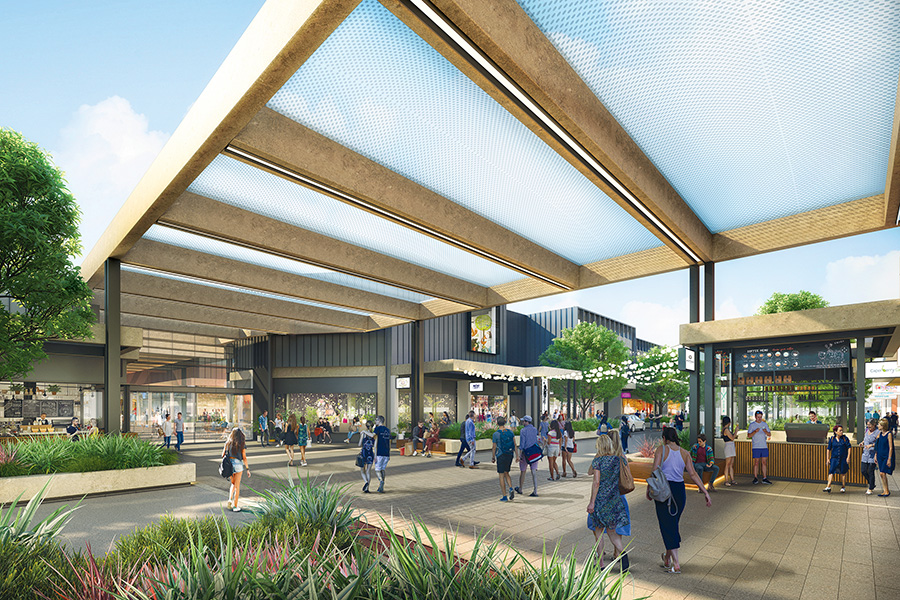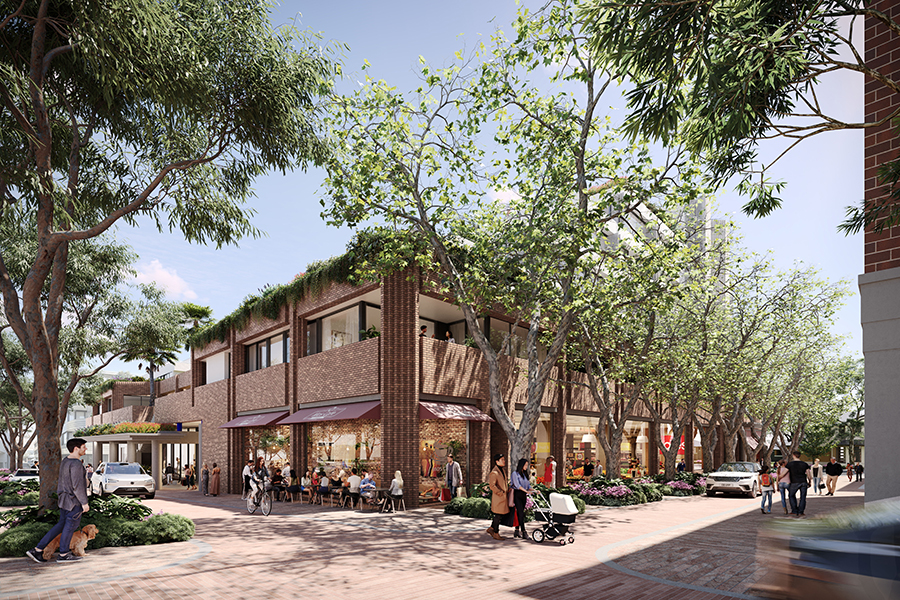The team at Titanium look at the retail trends for 2024 across developments, leasing, design and food. In a period where capital and developments are hard to get off the ground, the team identifies opportunities in this part of the investment cycle…
It’s been a tough few years for the retail property sector since the start of the pandemic. These challenges include the shift to online shopping, the cost of debt and a rise in the cost of construction thanks to supply chain, union and labour market constraints. Planning approvals also come with risks, while the retail rental market is flat; and the cost of living pressures are inescapable, while ESG commitments are also redirecting investment priorities.
But it’s not all doom and gloom. In this part of the investment cycle, we’ve seen two important strategies arise in the push for investment returns. The first is that owners and landlords should be developing new mixed use and retail schemes and gaining approvals ready for when development activity can ramp back up. The second is that active asset management is the key for improved asset performance/valuation.
Here’s what the various divisions of Titanium Property Investment are doing to help proactive asset owners “sweat their assets” more through this current phase while preparing for when the cycle swings back in favour of development. Once this happens, owners who do these things can act swiftly and gain a market-moving advantage.
Improvements through retail mix – squeezing the lemon
Titanium Food research identified that 85% of shopping centres have the incorrect balance between fast and slow food, impacting customer spending and dwell time. Remixing to increase the slow food offers in the right parts of the centre can consume vacancies or space handed back by majors downsizing.
In addition, our research found that 30% of all food and beverage (F&B) tenants under-perform for a variety of reasons, including concept, execution, quantum, location and design. Following a bespoke leasing plan for the asset to actively exit, replace or improve the F&B tenants can see MAT improvements of about 15% with flow-on effects to rental income upside.
Even before the pandemic, Titanium Retail Leasing noticed a new sweet spot attracting hordes of retailers – the mid-sized centre. Historically, more vanilla than the major and super regionals, regional and sub-regional centres are now very attractive to the primary and secondary trade area customers and are able to increase market share.
This is because they are sitting between the overabundance of the convenience-based centre with only service retail supporting the supermarket and the overwhelming scale of the mega centres that are overweighted for fashion and alienate the primary customer using them for the convenience shop.
With greater demand than there is supply for food and fashion spots within these centres, asset owners who engage in research to assess upcoming expiries and gaps in the mix to curate more bespoke speciality mixes are gaining traction in the trade area.
With many provincial assets selling well below replacement cost, having a tactical leasing strategy linked back to research and analysis has proven to generate core plus returns.

Oran Park Podium
Introduce growth prospects
Titanium Asset Management’s financial analysis of build-to-rent (BTR) funding options and mixed-use strategies has been unlocking space and achieving DAs for the addition of extra supermarkets, shop top residential and large format retail and hotels for clients from Newcastle to South West Sydney.
Following a tried and tested methodology, the team consistently identifies the most effective pathways to development investment and how to navigate the planning approval process effectively. Those owners that spend “deep focus” time now to prepare and gain approvals for expansions and additions will be able to take a market-moving advantage as the cycle swings back to retail development.
Over at Titanium Food, we’ve identified that one in every five shopping centres still has room for more food to meet demand and to grow market share. How crazy to not know if your centre is one of them!
Titanium Retail sees hot prospects by co-locating impulse luxury foods in the slower entertainment and leisure precincts ELP– think artisan gelato and gourmet doughnuts for indulgence, “trading down” spending when the cost of living pressures bite.
Improve customer amenity and foot traffic
Customer aspirations have shifted dramatically in the last few years. Alfresco dining areas, healthy, greener internal common areas, space for “working-from-the-mall”, pet-friendly, sustainable, accessible, culturally respectful spaces are what win the hearts and wallets of today’s customers. That’s a lot of design features to prioritise!
Titanium Place and Design (TiP&D) has been busy creating new commercial and retail environments that connect all these new drivers into stunning spaces no matter what the refurbishment budget. A great example is 201 Kent Street, owned by Investa, where TiP&D created a placemaking strategy to link the new end-of-trip and food precincts to create multiple pathways for tenants to engage with the retail and wellness spaces.
There’s never been a better time to plan
In the words of Benjamin Franklin, “Failing to plan is planning to fail”. 2024 – 2026 is the most crucial time in this decade to invest in active asset management. Unearthing opportunities to remix, re-purpose, add or upgrade sections of any centre is prudent and essential to driving increased investor returns in low growth cycles. Leaning on tested methodologies from industry experts is what smart asset owners do when the going gets tough.





















